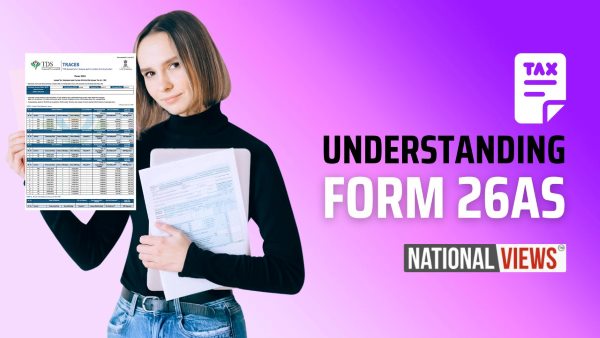Tax planning is a key part of financial management so that people can reduce their tax liabilities while complying with the income tax laws of India. Form 26AS is one of the most important documents that taxpayers need to have. It provides a detailed account of all kinds of transactions related to taxation and is essential for correct tax filing and planning. So, let’s take a closer look at what Form 26AS is to understand its importance better.
What is Form 26AS?
Form 26AS is an annual consolidated tax statement issued by the Income Tax Department of India. This form is designed to serve as a summary statement showing in one place every credit with its tax regime profile linked to an individual taxpayer’s Permanent Account Number (PAN). Information on TDS, advance tax made by the taxpayer, self-assessment tax paid by the taxpayer, etc. are reflected in this form.
Components of Form 26AS
Form 26AS is divided into several parts, each highlighting different aspects of tax transactions:
Part A: Details of TDS This section provides details of the tax deducted at source on different income items, such as salary, interest and dividends, professional fees, and so on. It shows the deductor’s details, TDS amount, TAN, and transaction date.
Part B: Details of TCS This section deals with tax collection at source on certain transactions. For instance, when a product is sold, this section includes the collector’s details, the amount collected, and relevant dates.
Part C: Details of Tax Paid (Other than TDS or TCS) This part records advance tax payments, self-assessment tax payments, and regular assessment tax payments made by the taxpayer. It includes the date of payment, the bank through which the payment was made, and the challan number.
Part D: Details of Paid Refunds Part D provides information on any tax refunds received by the taxpayer, including the assessment year, mode of payment, and the amount refunded.
Part E: Details of Specified Financial Transactions (SFT) This section captures high-value transactions that the taxpayer has undertaken during the year, such as large cash deposits or significant purchases, which are reported by banks and financial institutions.
Also Read: Now 15% STCG on Shares and Mutual Funds Is Unfair: Know Why We Need Change
Importance of Form 26AS in Tax Planning
Ensuring Accurate Tax Filing
Form 26AS is instrumental in ensuring that the TDS details match the actual receipts. By cross-checking the information in Form 26AS, taxpayers can avoid discrepancies in income reporting and ensure that all income is accurately declared.
Claiming Refunds
Form 26AS helps in matching tax credits, which is crucial for claiming eligible refunds. Ensuring that all taxes paid are correctly reflected in the form can prevent taxpayers from missing out on due refunds.
Preventing Tax Notices
By verifying the correctness of tax payments and deductions, taxpayers can avoid unnecessary tax notices and penalties. It helps in identifying any discrepancies early on, enabling timely rectification.
Facilitating Smooth Processing of Income Tax Returns
With all tax-related transactions consolidated in one document, Form 26AS provides a comprehensive view, making the income tax return filing process smoother and more efficient.
Conclusion
Form 26AS is an important document for tax planning as it gives a complete overview of the various tax-related transactions. By keeping track on a regular basis, taxpayers can ensure accuracy in their tax matters, thereby avoiding any discrepancies and helping the taxpayers claim refunds to which they are rightfully entitled. Integrating Form 26AS into your tax planning strategy can lead to a more proactive and informed approach to managing taxes, ultimately contributing to better financial health.


